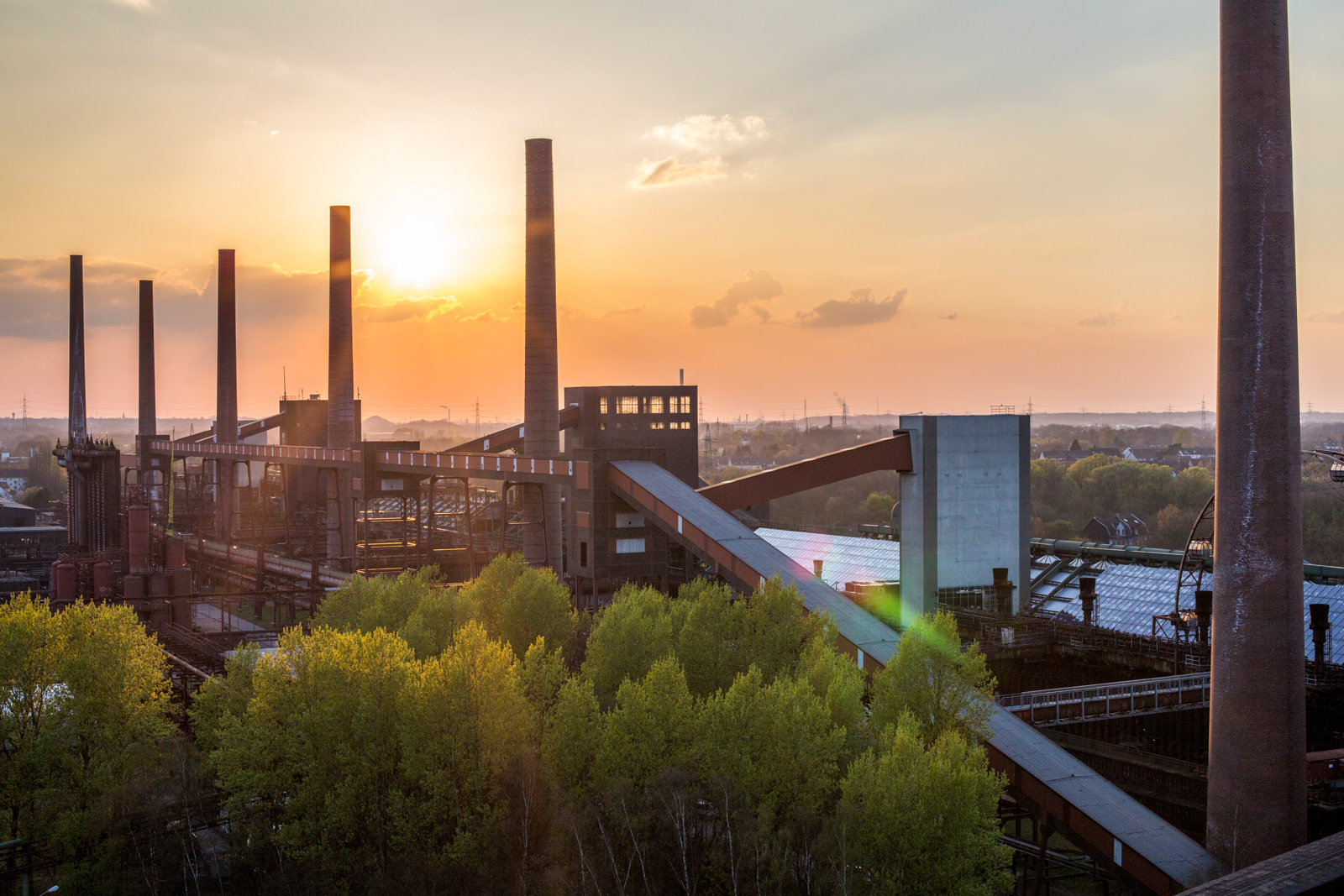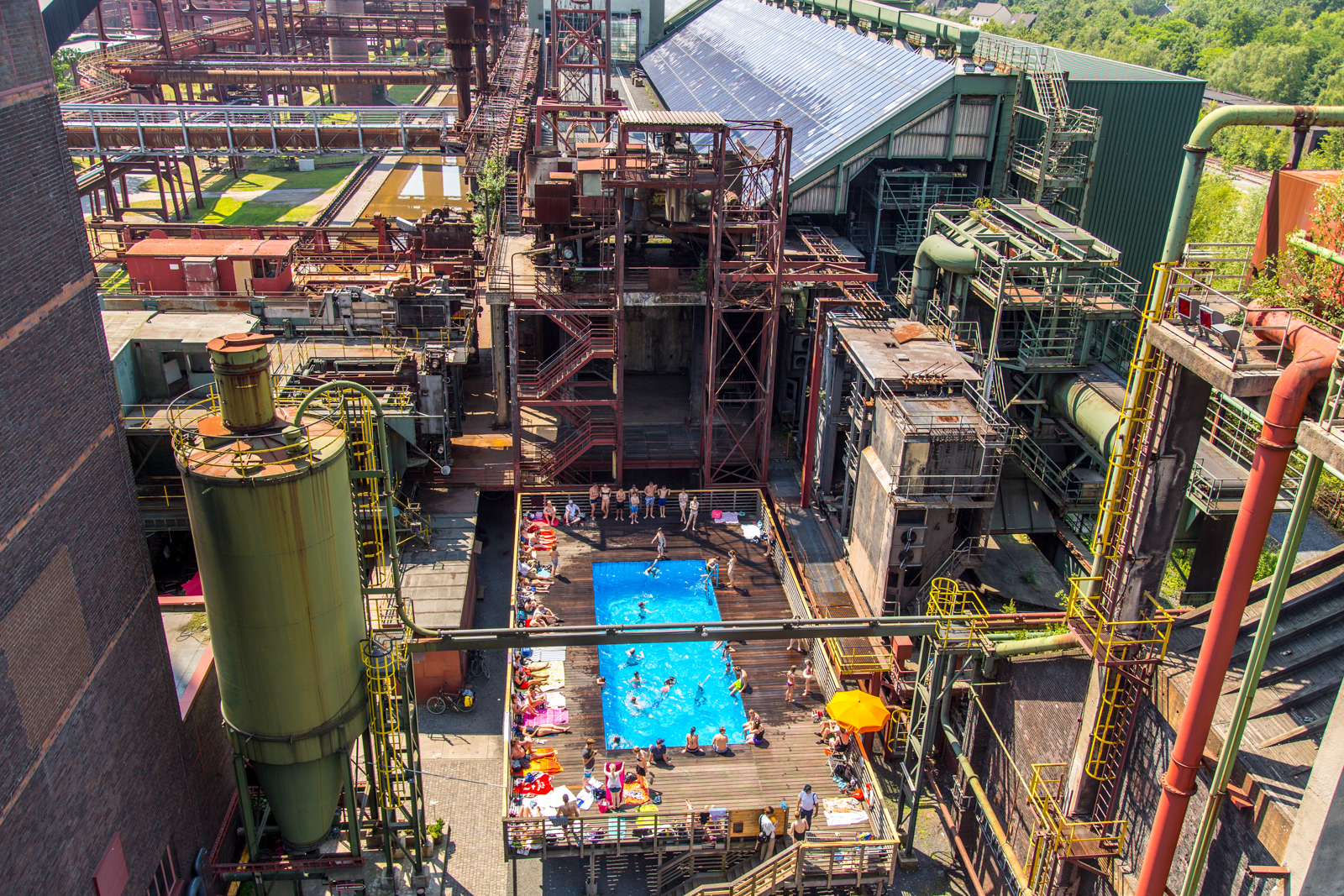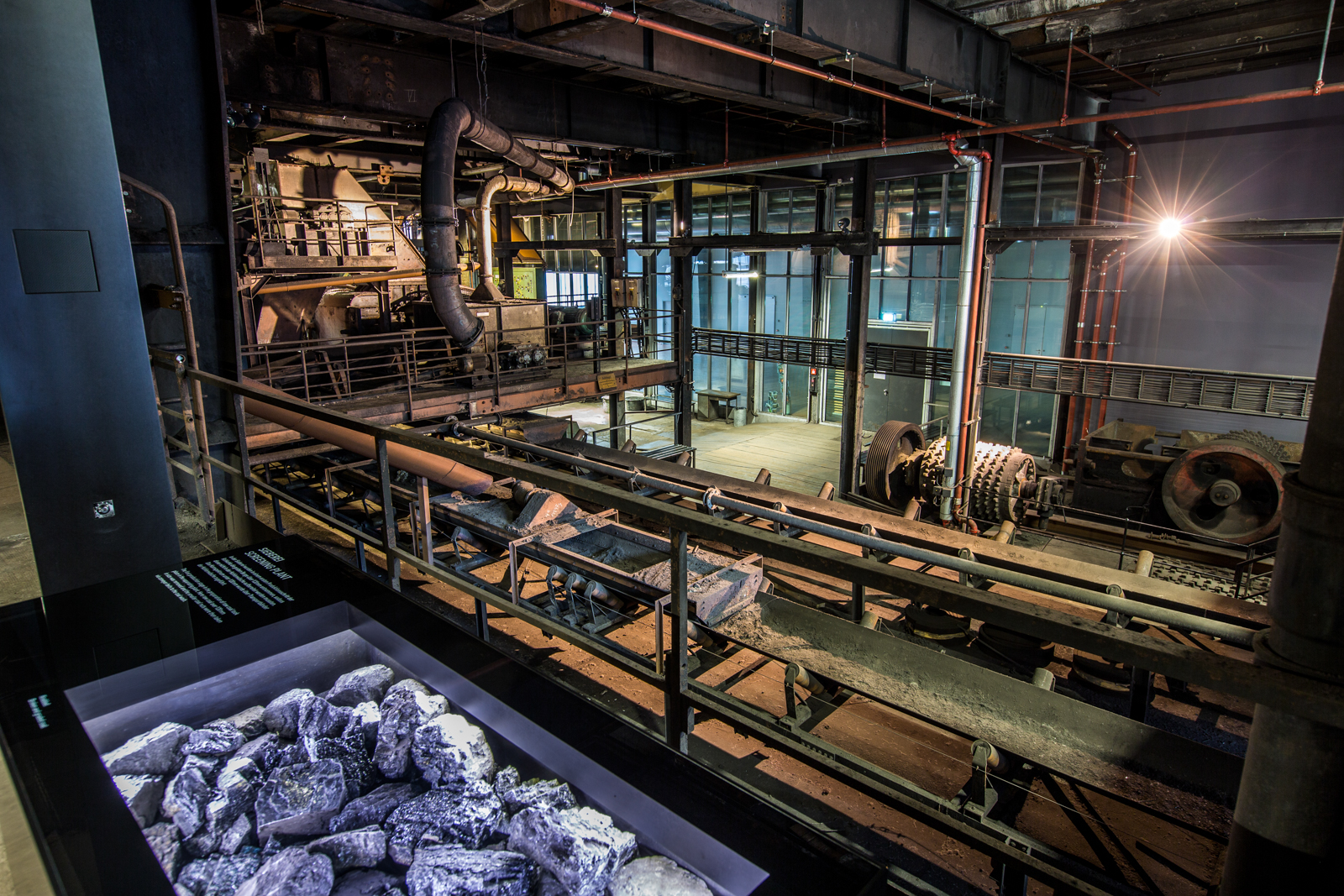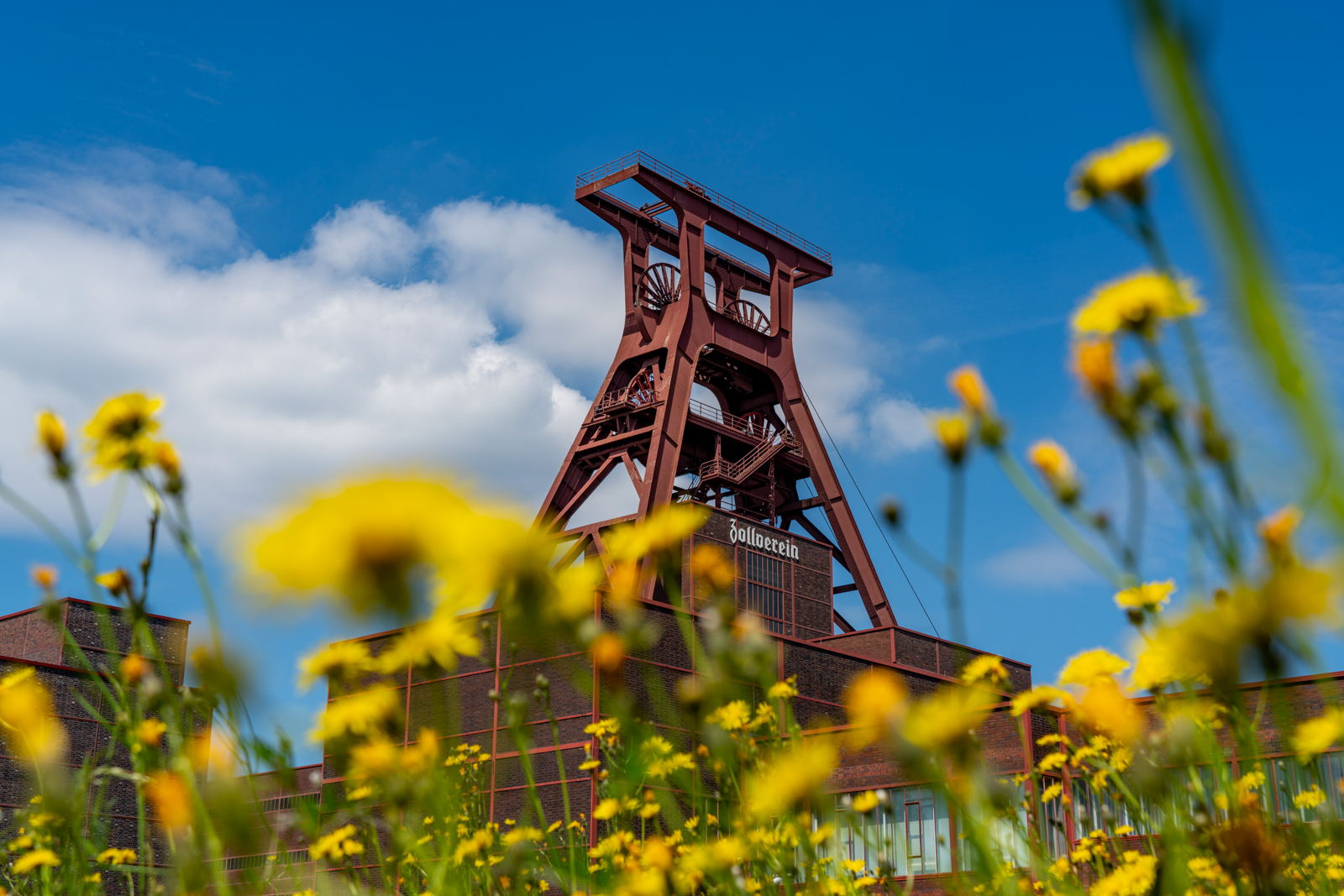In 1986, coal miners made their final descent into the Zeche Zollverein, the largest coal mine in Essen, Germany. Since the 1960s, the western Ruhr region had been at the centre of environmental debate as the coal, iron, and steel production that fuelled Germany’s economy also heavily polluted the area’s air and waterways. Now the mine was shut down for good.

While coal mining has had a recent resurgence due to Russia’s war in Ukraine, for the past two decades Essen has worked to dust off its industrial past and creatively reinvent itself. Cleaning up the Ruhr River and redeveloping urban spaces show that its efforts seem to be working. In 2017, the EU crowned Essen as its European green capital, and the region is part of the European route of industrial heritage, a network of sites that connects more than a dozen countries and over a thousand locations. Cyclists zoom along the 400-kilometre Route der Industriekultur, which features the monumental Zeche Zollverein.
The preserved coal plant has become a symbol in Germany of success transcending the past. What was once the largest colliery in Europe is now a 247-acre UNESCO World Heritage site and arts hub. Arriving there feels like approaching an alien, otherworldly city, with towering red mine shafts and a labyrinth of factories. Daily tours at the Ruhr Museum, often led by retired miners, trace the history of the region, taking visitors along the rusty railway lines and underneath gargantuan machines.

A public pool was built into the old coking plant, as well as a design college built by Dutch architect Rem Koolhaas. The Zollverein is not the region’s only tourist draw, however. Both the David Chipperfield-designed Museum Folkwang—with works from Renoir to Richter—and the Alvar Aalto-designed theatre staging Pina Bausch productions are reasons alone to make the trip into downtown Essen.
But what buoys the Zollverein today is its expansive sweeps of verdant green. Hanna Lohmann, press officer for the complex, says that the revived ecosystem is entirely its own. Bats and frogs and birds flourish in this new environment, where wildflowers and young birch trees grow. A mental snapshot of the Zollverein’s transformation is a heartening souvenir to take back home to Canada. Historical sites of heavy industry can be given a second, greener shot at life here too.










